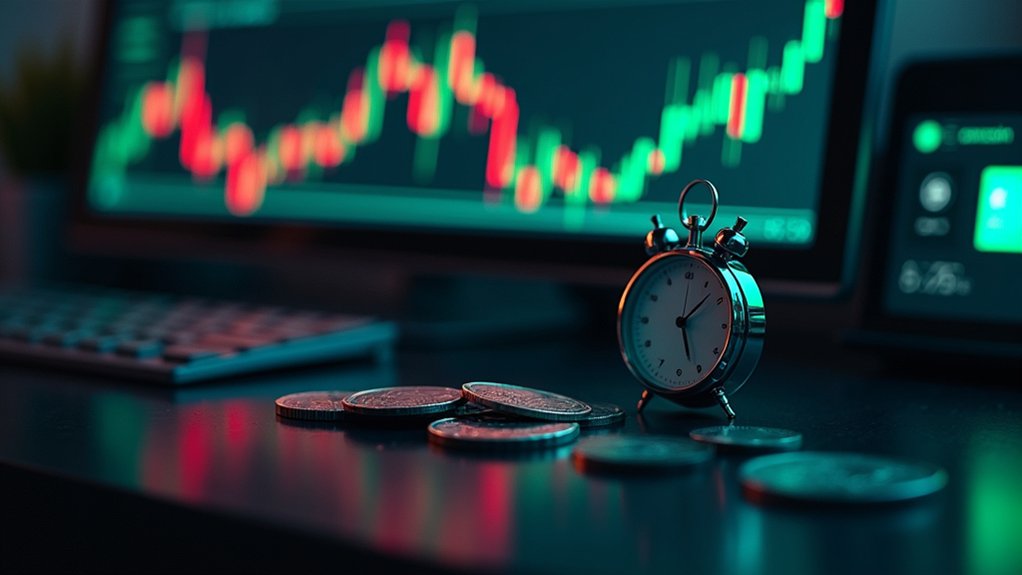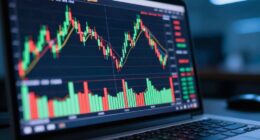Traders, stop bungling your profits and face the harsh reality of slippage with ruthless intent. Use limit orders to lock in precise prices, sidestep volatile economic events, and trade during peak liquidity hours to crush price gaps. Split oversized orders to dodge market impact, and set strict slippage tolerances, lest you bleed cash through sheer negligence. Don’t assume markets bend to your whims—control what you can. Explore further to master these tactics.

Why do so many traders, despite their supposed savvy, still fall victim to the insidious trap of slippage, watching profits erode through sheer negligence? It’s a glaring failure, frankly, to ignore the brutal reality of market dynamics, where a trade’s execution price deviates—often cruelly—from the expected, due to volatility or pitiful liquidity. Slippage isn’t a mere nuisance; it’s a profit assassin, slashing returns and inflating costs across stocks, forex, and futures. Traders who shrug at this, assuming they’re above such pitfalls, deserve the financial bruises they inevitably collect.
Let’s cut the excuses and face facts: slippage thrives on ignorance of Risk Assessment, a non-negotiable discipline that too many sidestep with reckless bravado. Without rigorously evaluating market volatility or liquidity, traders stumble blindly into losses—pathetic, avoidable losses. And then there’s Position Sizing, another glaring blind spot; over-leveraging or dumping oversized trades into thin markets practically begs for price distortion and slippage. Honestly, how hard is it to scale positions with a shred of foresight, rather than playing the cowboy in a market that chews up hubris for breakfast? High volatility periods often exacerbate slippage, making it critical to time trades carefully high volatility periods. Moreover, market makers can influence slippage by widening spreads during turbulent times to protect their risk exposure widening spreads.
Strategies to curb this mess exist, yet adoption lags—why? Limit orders, for one, offer a lifeline, letting traders dictate precise execution prices, though, naturally, they falter in wild markets. Trading during peak liquidity hours, when gaps shrink, is another no-brainer, yet some still bumble into dead zones. Avoiding high volatility, like during economic bombshells, should be instinct, not an afterthought. Splitting large orders to lessen market impact? Basic. Setting an appropriate slippage tolerance level can also prevent trades from executing at unfavorable prices or failing entirely. The tools are there, yet slippage persists. It’s high time traders stop whining, start strategizing, and own their game—or watch their capital bleed out, drop by bitter drop. Pathetic, isn’t it, to keep failing at the preventable?
Frequently Asked Questions
What Causes Slippage in Different Market Conditions?
Slippage in various market conditions often arises from Volatility Causes, such as rapid price shifts. Additionally, News Triggers, like economic reports or geopolitical events, can provoke sudden market movements, exacerbating the risk of slippage.
How Does Slippage Affect Long-Term Trading Strategies?
Slippage substantially impacts long-term trading strategies by eroding returns and increasing costs. It challenges Strategy Evolution and Risk Management, as persistent price deviations undermine performance, necessitating realistic assumptions for sustainable, robust trading approaches.
Can Slippage Impact Automated Trading Systems?
Slippage can greatly impact automated trading systems. It disrupts expected trade outcomes due to automation glitches and code errors, leading to discrepancies in execution prices and affecting the overall performance of trading algorithms.
Are There Specific Brokers With Lower Slippage?
Certain brokers are recognized for lower slippage. Broker Recommendations include Forex.com, Interactive Brokers, and IG for their efficient execution. User Feedback often highlights their reliability and tight spreads, ensuring minimal price discrepancies during trades.
How Does Slippage Vary Across Asset Classes?
Slippage varies greatly across asset classes. Equity Variation shows differences in stocks due to liquidity and sentiment shifts. Commodity Differences arise from supply disruptions and geopolitical events, impacting prices and slippage risks distinctly.









